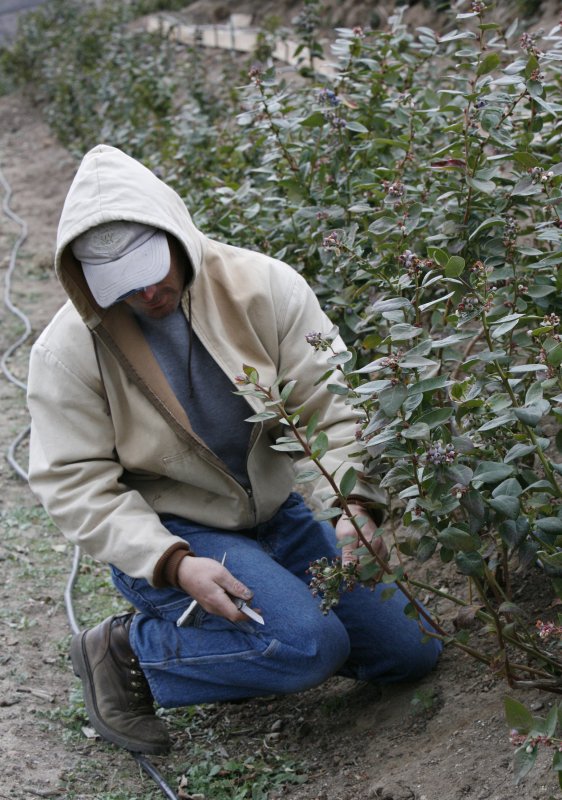Blueberries, celery and grapes may reduce the risk of diabetes.
Organic farmer Greg Berry examines the damage to the new crop of blueberries on his farm in Moorpark, California. (UPI Photo/ David Silpa)
|
License Photo
NORWICH, England, Jan. 21 (UPI) -- Certain foods such as blueberries, celery and grapes may reduce the risk of diabetes, researchers in Britain say.
Eating high levels of flavonoids -- including anthocyanins and other compounds -- found in berries, tea and chocolate could offer protection from type 2 diabetes.
Study leader Aedin Cassidy of University of East Anglia's Norwich Medical School and Tim Spector, director of the Twins UK study from King's College London, said eating certain sub-groups of flavanoids are associated with lower insulin resistance and better blood glucose regulation.
"Our research looked at the benefits of eating certain sub-groups of flavanoids. We focused on flavones, which are found in herbs and vegetables such as parsley, thyme and celery, and anthocyanins, found in berries, red grapes, wine and other red or blue-colored fruits and vegetables," Cassidy said in a statement.
"This is one of the first large-scale human studies to look at how these powerful bioactive compounds might reduce the risk of diabetes. Laboratory studies have shown these types of foods might modulate blood glucose regulation -- affecting the risk of type 2 diabetes."
Researchers studied almost 2,000 healthy women from TwinsUK, who had completed a food questionnaire designed to estimate total dietary flavonoid intake as well as intakes from six flavonoid sub-classes.
Blood samples were analyzed for evidence of both glucose regulation and inflammation. Insulin resistance, a hallmark of type 2 diabetes, was assessed using an equation that considered both fasting insulin and glucose levels.
"We found that those who consumed plenty of anthocyanins and flavones had lower insulin resistance. High insulin resistance is associated with type 2 diabetes, so what we are seeing is that people who eat foods rich in these two compounds -- such as berries, herbs, red grapes, wine -- are less likely to develop the disease.
"We also found that those who ate the most anthocyanins were least likely to suffer chronic inflammation -- which is associated with many of today's most pressing health concerns including diabetes, obesity, cardiovascular disease, and cancer."
Those who consumed the most flavone compounds had improved levels of a protein -- adiponectin -- which helps regulate a number of metabolic processes including glucose levels, the study found.
"What we don't yet know is exactly how much of these compounds are necessary to potentially reduce the risk of type 2 diabetes," Cassidy added.
The study was published in the Journal of Nutrition.















